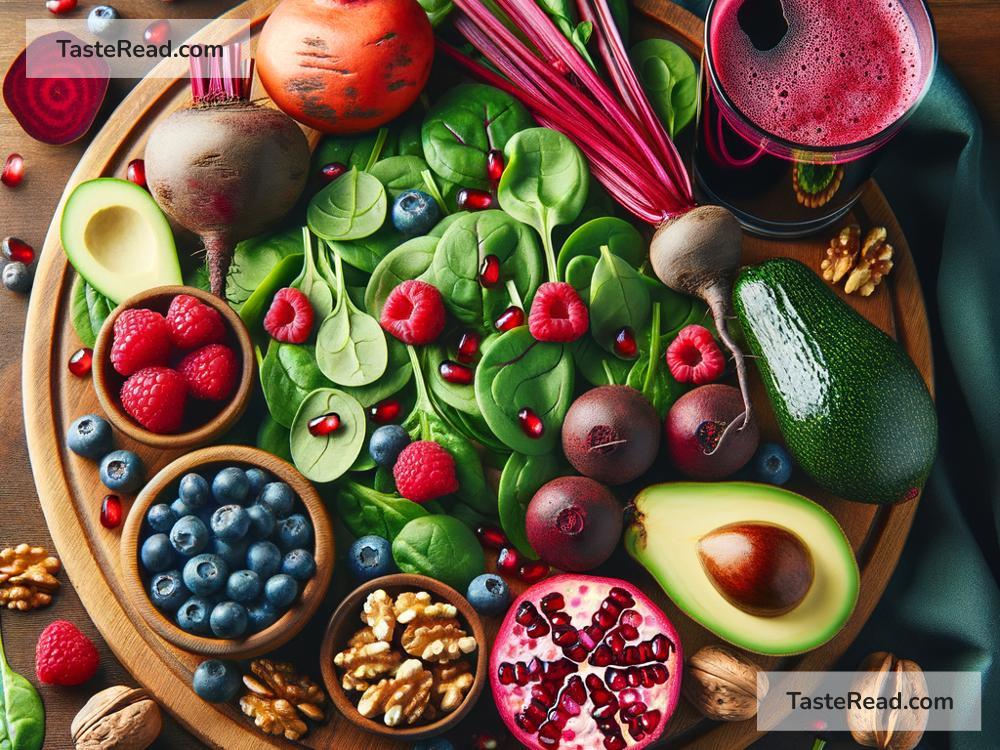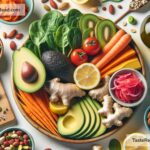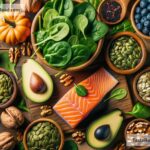Foods That Promote Healthy Oxygen Exchange
Oxygen is crucial to our health and survival. Every cell in our body needs oxygen to create energy, perform essential functions, and keep us alive. But did you know that the foods you eat can directly influence how well your body uses oxygen? Yes, your diet plays a vital role in promoting healthy oxygen exchange in your blood and tissues!
In this blog, we’ll explore some foods that can help improve oxygen flow in your body. These foods work by boosting circulation, improving red blood cell production, and enhancing overall oxygen uptake. And don’t worry—we’ll keep it simple so everyone can benefit!
Why Is Oxygen Exchange Important?
Before we dive into foods, let’s briefly look at why oxygen exchange matters:
– Energy Production: Oxygen is used to turn the food you eat into energy for your body to function.
– Organ Health: Your brain, muscles, and other organs rely on oxygen to work properly.
– Immune Support: Oxygen promotes strong immunity, helping you fight infections and recover faster.
– Skin and Hair Health: Proper oxygen flow results in vibrant skin and healthy hair.
So, supporting healthy oxygen exchange is key to staying energetic, focused, and feeling your best!
Top Foods That Boost Oxygen Exchange
1. Leafy Greens
Dark, leafy greens like spinach, kale, and Swiss chard are excellent for oxygen exchange. They are packed with iron, which helps in producing hemoglobin, a protein in red blood cells that carries oxygen throughout your body. These greens also contain chlorophyll, which is similar in structure to hemoglobin and supports oxygen transport.
How to Eat: Add spinach to smoothies, sauté kale with garlic, or toss Swiss chard into salads.
2. Beets
Beets are rich in nitrates, which improve blood flow and oxygen delivery. Nitrates are converted into nitric oxide in your body, relaxing blood vessels and increasing oxygen exchange. Athletes often eat beets or drink beet juice for better performance because they enhance oxygen utilization during physical activities.
How to Eat: Roast beets, blend them into juices, or grate them into salads.
3. Citrus Fruits
Vitamin C in citrus fruits like oranges, lemons, and grapefruits is essential for good oxygen exchange. Why? Vitamin C helps your body absorb iron effectively, which supports red blood cell function. Better iron absorption means better transportation of oxygen in the bloodstream.
How to Eat: Squeeze lemon into water, snack on an orange, or enjoy grapefruit for breakfast.
4. Nuts and Seeds
Nuts like almonds and walnuts, and seeds such as chia seeds and flaxseeds, are loaded with healthy fats and magnesium. Magnesium enhances circulation and supports energy production at the cellular level, helping your body make the most of the oxygen it receives.
How to Eat: Snack on mixed nuts, sprinkle seeds over oatmeal, or add them to smoothies.
5. Avocados
Avocados are another food high in healthy fats and magnesium. They help improve blood flow and oxygen delivery to your organs. Plus, their potassium content helps balance fluids, which is essential for maintaining good circulation.
How to Eat: Mash avocado into guacamole, spread it on toast, or slice it into salads.
6. Fish
Fatty fish such as salmon, mackerel, and sardines are rich in omega-3 fatty acids. Omega-3s reduce inflammation and improve blood vessel function, ensuring oxygen-rich blood can reach your tissues more efficiently.
How to Eat: Grill salmon for dinner, make a sardine spread, or bake mackerel with herbs.
7. Berries
Blueberries, strawberries, and raspberries are antioxidant powerhouses that support oxygen exchange by improving circulation and reducing oxidative stress in cells. Healthy circulation means your tissues get the oxygen they need to thrive.
How to Eat: Toss berries into yogurt, blend them into smoothies, or eat them as a snack.
8. Garlic
Garlic is famous for its ability to improve cardiovascular health. It contains allicin, a compound that promotes blood vessel relaxation, enhancing oxygen delivery throughout your body.
How to Eat: Add garlic to soups, stir-fries, or marinades.
9. Whole Grains
Whole grains like quinoa, oats, and brown rice are rich in complex carbohydrates and B vitamins. These nutrients keep your energy levels up and support the metabolic processes that rely on oxygen. They also help maintain steady blood sugar, ensuring proper circulation.
How to Eat: Start your day with oatmeal, serve quinoa as a side dish, or use brown rice in stir-fries.
10. Water
Okay, water isn’t technically a “food,” but staying hydrated is just as important as eating the right nutrients. Your blood is mostly water, so drinking enough water ensures it flows smoothly and delivers oxygen effectively to your cells.
How to Drink: Sip water throughout the day—8 glasses is a good guideline for most people!
Easy Lifestyle Tips to Boost Oxygen Exchange
Eating these foods will definitely help, but combining your diet with healthy lifestyle habits can make an even bigger difference:
– Exercise Regularly: Physical activity improves circulation and oxygen uptake.
– Practice Deep Breathing: Take slow, deep breaths to enhance oxygen intake.
– Get Enough Sleep: Rest supports your body’s ability to replenish and use oxygen efficiently.
– Avoid Smoking: Smoking reduces oxygen levels and damages circulation.
Conclusion
Your body relies on oxygen for almost everything it does, and choosing the right foods can dramatically improve oxygen exchange. From leafy greens and beets to citrus fruits and fatty fish, there’s no shortage of delicious options to support your health.
By incorporating these oxygen-boosting foods into your daily diet, you’ll feel more energetic, your organs will function better, and you’ll enjoy an overall sense of well-being. So, start small—choose one food from this list to add to your meals today, and watch your vitality soar!


